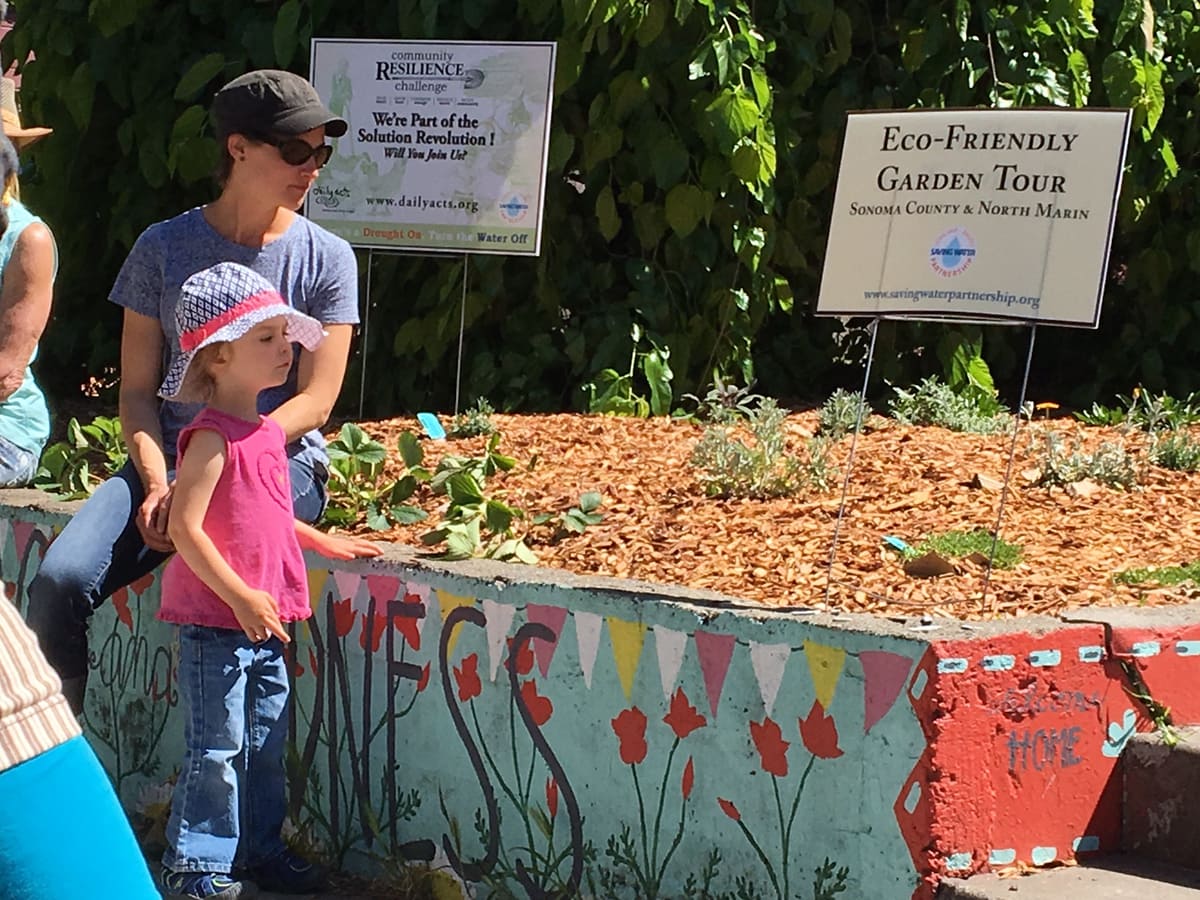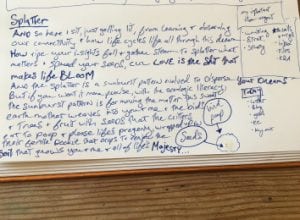Happy May inspired daily actors,
Great gads of garden pesto! Can you believe we are already four months into the year? That means it’s time for our big month of action for the Community Resilience Challenge? So register today and share the call to action!
Last Wednesday, I sat in the garden for my morning practice when clouds became mist, which turned into a drizzle and then a light, nourishing rain. There was the soft sound of raindrops on leaves and the steady trickle of a small stream flowing through a pipe that connects our roof and rain tank, keeping the verdant dream of spring alive and hydrated. After a few years of drought, it’s amazing how one forgets how the landscape comes to life with regular rains.
In a carbon farming article by friend and ally Katy Mamen, I read that one ounce of green growth per square foot equates to an extra inch of water storage capacity in the soil. That would make our landscape one big green sponge, which we’ve been weeding like mad in preparation for the rockingly successful Eco-Friendly Garden Tour this last weekend. After all, we didn’t want to lose or scare off any attendees. I wondered, should we make signs? “Beware of falling food” and “Keep pets and children on path, fecund life-regenerating landscape, apt to swallow or transform anything or anyone that lingers too long”.
As I use pulled weeds to mulch between rows of onions and garlic, and under fruit trees and berry bushes, I pick up a small pile that’s been sitting on a concrete path (one of the few that hasn’t been removed or buried). It was writhing with sow bugs, worms and other critters, rapidly becoming soil.
It feels good to know that most green matter gets mulched in the garden, fed to the chickens or turned into compost, rather than put in our recycling bin. Starting to make compost again was one of my Community Resilience Challenge action pledges. It feels especially important with the loss of Sonoma Compost, increasing emissions and ultimately the cost of organic materials to feed our gardens and farms, as our green waste leaves the county.
As part of a Carbon Farming Series that Daily Acts is co-sponsoring, we hosted a talk and panel with John Roulac, CEO of Nutiva. John reminded us that while reducing greenhouse gas emissions is important, it’s only half the solution. The other part comes from increasing the organic matter in our soil by pulling carbon out of the air. There has been an explosion of interest in this, but most of it focused at the farm scale. Though we can also do a lot in our gardens and neighborhoods to grow healthy soil and aware, engaged community members. Here are a few tips for Carbon Farming at Home.
With a busy schedule, I’ve needed some good garden and neighborhood nature connection time. So a recent Friday garden session provided some nice renewal. I got to weed, nibble berries, connect with neighbors and disperse the recent rains from our tank. Even better, two rarely seen friends spontaneously stopped by at different times for impromptu catch up and strategy sessions. Synchronistically, both are tied to soil-building and carbon farming work. Sometimes the stars align, especially when we put ourselves in the right place at the right time. For me that’s the garden most anytime! Last week I also had some nice garden connection time at Daily Acts staff Personal Ecology session. Most every month we take a pause to breathe, connect and talk about the personal and organizational practices and habits that help us live our potential and fulfill our mission. Having a cob oven and bench in the garden to easily transition from meeting space to pizza making is also helpful in creating conditions conducive for people and place to flourish.
The next morning I sat in the garden stretching, reflecting, and journaling about the importance of helping our team (and myself) prioritize well and make sure we get to not just urgent matters, but also the important non-urgent stuff that is critical to success. Just then a critter zoomed over my head and I felt a wet spot on my hand. I looked down to see a glistening green droplet with a seed in it. I thought, “Did I really just get pooped on?”. Then I noticed the affirming little splatters on my journal. Some may call that bad luck, but I saw it as having the right insight in the right place at the right time. There I sat doing my important non-urgent work of reflecting in the garden about the important non-urgent stuff that helps us live our potential and affect the greatest positive change. I guess maybe one of our signs needs to read “Beware of falling food and poop” in these transformative landscapes.
Whether you are coming out of a busy spring or not, we live in a fast-paced culture hooked on urgency. And there are a great many urgent matters to address to make our lives and communities more sustainable and resilient. But what are some of the important, non-urgent things that help you be your best, to practice self-care, sustainable living and being a good neighbor and citizen?
Lastly, don’t forget to register your actions for the Community Resilience Challenge and to inspire and encourage friends, neighbors and co-workers to do the same. After all many hearts, hands and small actions make for light work, good connection and in this case a better future.



